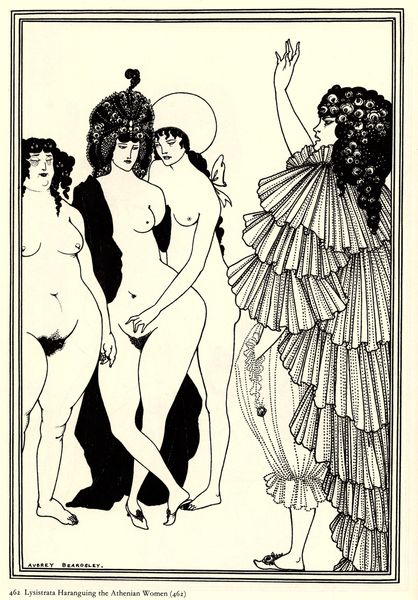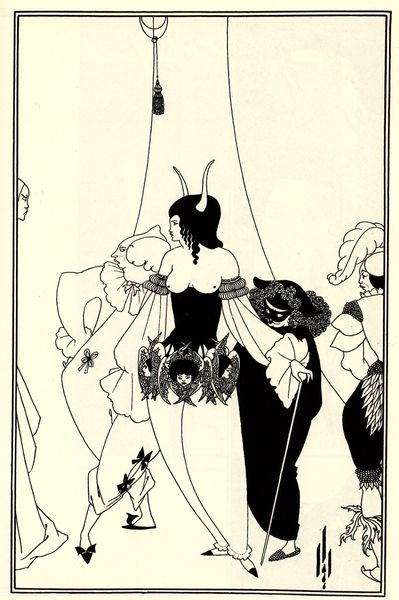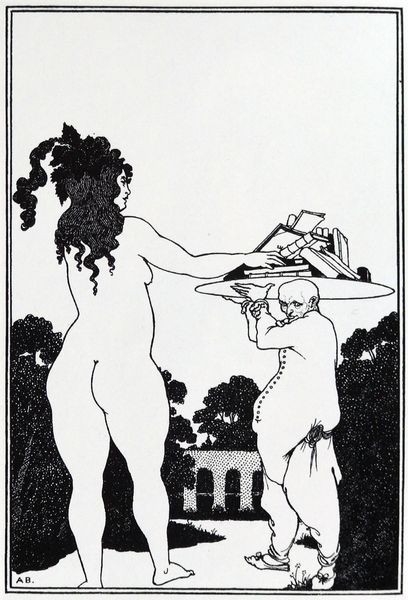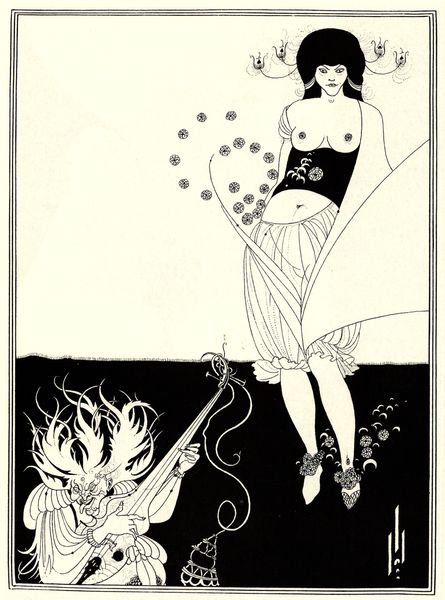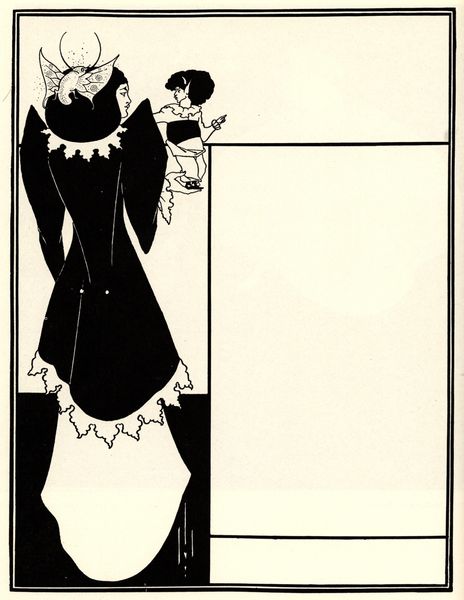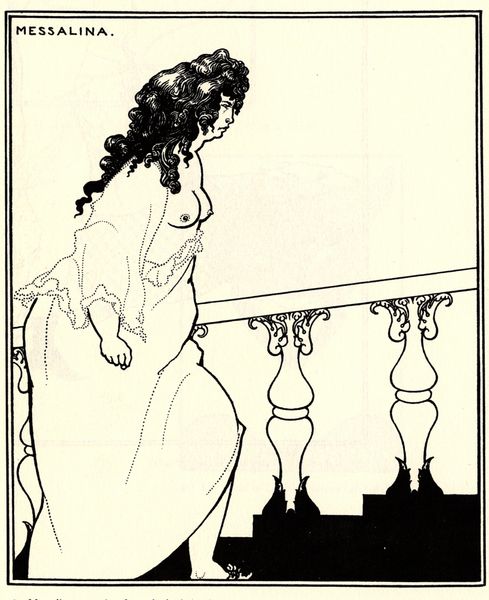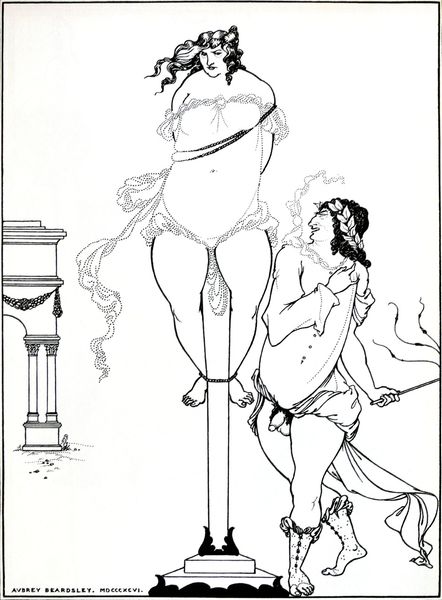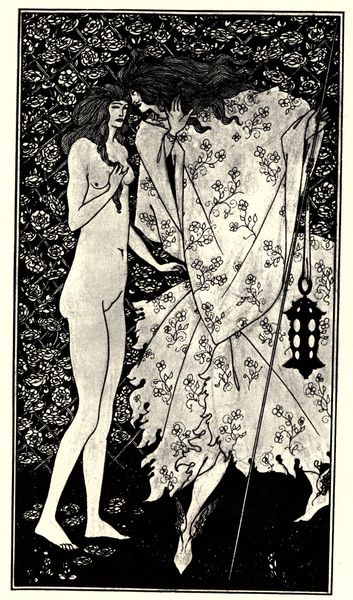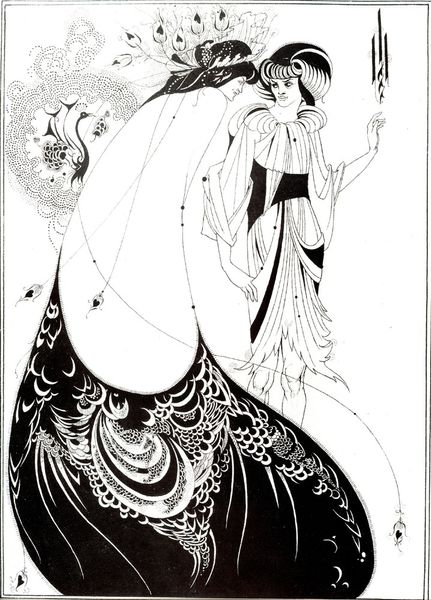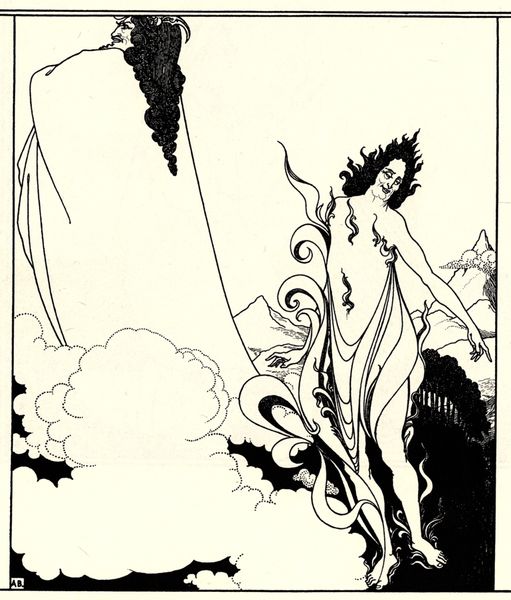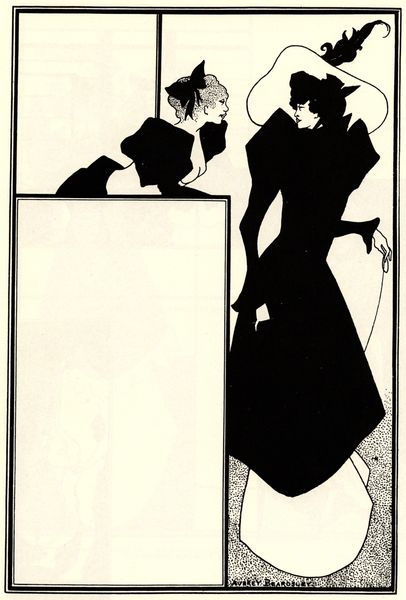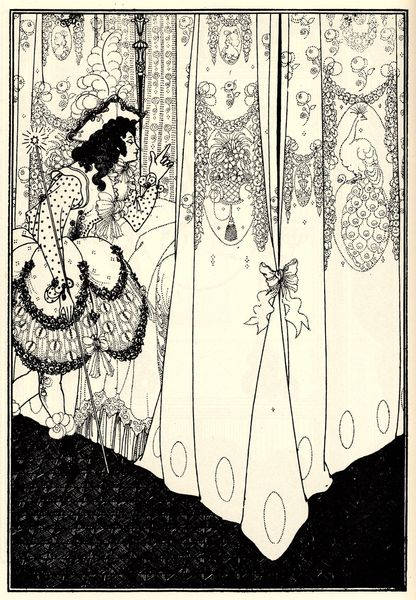
drawing, ink, pen
#
drawing
#
art-nouveau
#
figuration
#
ink line art
#
ink
#
symbolism
#
pen
#
nude
#
erotic-art
Copyright: Public domain
Curator: This is Aubrey Beardsley's pen and ink drawing "Two Athenian Women in Distress," created in 1896. It’s currently housed here at the Victoria and Albert Museum. Editor: My first reaction is… provocative! The contrasting textures, the interplay of light and shadow, and the unsettling scene it depicts definitely grab your attention. Curator: Indeed. Beardsley was a leading figure in the Aesthetic movement, known for his decadent and often controversial works. The art nouveau style, with its emphasis on flowing lines and ornamentation, is clearly evident. His work always challenged social norms, especially concerning Victorian sexuality. Editor: Precisely. Looking at the "distress" of the title, it's impossible to ignore the socio-political context. I think we're prompted to question what sort of oppression these women are facing? Is it societal expectations or internalized power dynamics? There's clearly more than meets the eye, this is erotic, sure, but in what manner? Curator: It’s very interesting to think of this in contrast with what Victorian morals supposedly valued. The use of the nude body and potentially symbolic objects suggests an awareness and critique of the way women are represented in visual culture. Editor: I'm curious about the female figure seemingly dangling, as if from a rope. Does that signal a loss of control or perhaps, something more defiant, more active than simple victimization? What can this drawing say about women’s roles and constraints during that era, in addition to now? Curator: I suppose one can suggest that the viewer may not see the entire image, being excluded to witness, so to speak. But yes, that can very well be read through a modern feminist lens of challenging power. What do you make of the composition as a whole? Editor: The contrast and balance between these very detailed characters certainly feels odd. And maybe that’s on purpose? Maybe Beardsley's attempting to represent an imbalance. Considering, you know, both their position within a conservative patriarchy but, also, their resistance of it, if the artist sees any. Curator: This piece, like much of Beardsley's work, acts as a historical record and pushes for modern discussions about identity, gender, and the continued significance of historical oppressions. Editor: Absolutely. Art like this helps to highlight intersections within our modern lives. Beardsley may not have fully anticipated the nuances of these contemporary discussions, but the seed of resistance and the questioning of societal norms are undeniably present.
Comments
No comments
Be the first to comment and join the conversation on the ultimate creative platform.
